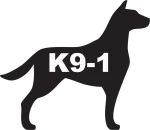
Entropion in Dogs
Entropion is a genetic condition in which a portion of the eyelid is inverted or folded inward. This can cause an eyelash or hair to irritate and scratch the surface of the eye, leading to corneal ulceration or perforation. It can also cause dark-colored scar tissue to build up over the wound (pigmentary keratitis). These factors may cause a decrease or loss of vision.
Entropion is fairly common in dogs and is seen in a wide variety of breeds, including short-nosed breeds, giant breeds, and sporting breeds. Entropion is almost always diagnosed around the time a puppy reaches its first birthday.
The condition or disease described in this medical article can affect both dogs and cats. If you would like to learn more about how this disease affects cats, please visit this page in the PetMD health library.
Symptoms and Types
In toy and brachycephalic breeds of dogs, excess tears (epiphora) and/or inner eye inflammation (keratitis) are common signs of entropion. However, in giant breeds, it is more common to see mucus and/or pus discharge from the outer corner of the eyes. In other breeds of dogs, eye tics, discharge of pus, eye inflammation, or even rupture of the cornea are the usual signs of entropion.
Causes
Facial shape is the primary genetic cause of entropion. In short-nosed, brachycephalic breeds of dogs there is more tension on the ligaments of the inner eye than would normally be seen. This, along with the conformation (shape) of their nose and face can lead to both the top and bottom eyelids rolling inward toward the eyeball. Giant breeds have the opposite problem. They tend to have excess slack in the ligaments around the outer corners of their eyes. This permits the outer edges of the eyelids to fold inward.
Repeated bouts of eye infections (conjunctivitis) can cause spastic entropion, which can lead to functional entropion. This can also be caused by other types of eye irritants and is generally the case in breeds that do not normally exhibit entropion. Lastly, inflammation of the chewing muscles or severe weight loss can lead to loss of fat and muscle around the eye socket, which may be another cause for entropion.
Diagnosis
Diagnosis of entropion is fairly straightforward through examination. Any underlying causes or irritants should be dealt with prior to attempting surgical correction. Breeders should pay close attention to puppies, especially thos ehtta are prone, and have them checked for entropion if their eyelids do not open by four or five weeks old.
mucus
A type of slime that is made up of certain salts, cells, or leukocytes
pus
A product made of fluid, cell waste, and cells
keratitis
A medical condition in which the cornea becomes inflamed
epiphora
The excessive production of tears
entropion
Turning in of the eyelids
brachycephalic
An animal with a wide head, short in stature.

